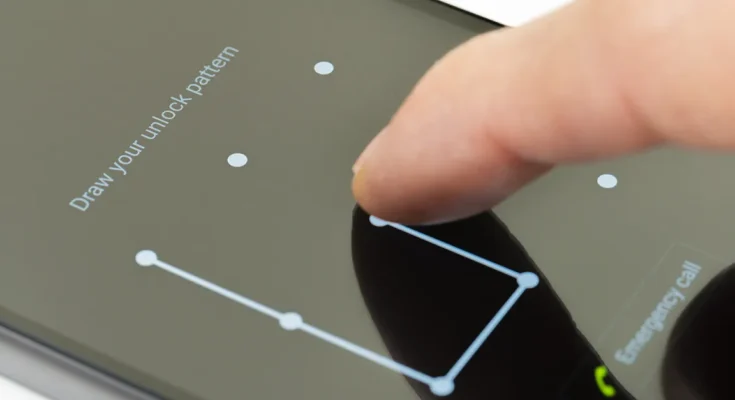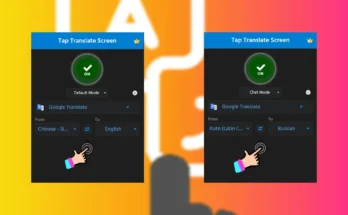In the ever-evolving world of digital technology, securing your mobile device is a top priority. One of the most popular methods of protecting your smartphone or tablet is through a pattern lock screen. This guide will explore everything you need to know about pattern locks, including how they work, their advantages, setup instructions, and tips to enhance security. By the end of this article, you’ll have all the information necessary to decide if a pattern lock screen is the right choice for your device.
What Is a Pattern Lock Screen?
A pattern lock screen is a security feature that requires users to draw a specific pattern on a grid of dots to unlock their device. Unlike PINs or passwords, which rely on alphanumeric combinations, pattern locks are visually intuitive and user-friendly. Typically, these patterns are created by connecting at least four dots in a unique sequence on a 3×3 grid.
How Does a Pattern Lock Screen Work?
The technology behind a pattern lock screen is based on gesture recognition. Here’s a simplified breakdown:
- Pattern Setup: During setup, users draw a unique pattern on the screen.
- Encryption: The pattern is converted into a hashed value that the device stores securely.
- Authentication: When unlocking, the system compares the entered pattern’s hashed value with the stored hash. If they match, the device unlocks.
This process ensures that your pattern remains secure and is not stored as an actual visual representation.
Advantages of Using a Pattern Lock Screen
- Ease of Use:
- Patterns are easier to remember and faster to input compared to lengthy PINs or passwords.
- Visual Memory Aid:
- For visual learners, patterns are more intuitive than alphanumeric combinations.
- Customizable:
- Users can create a wide variety of patterns, making it harder for unauthorized individuals to guess.
- Compatibility:
- Most Android devices come with built-in support for pattern locks, ensuring wide availability.
Step-by-Step Guide to Setting Up a Pattern Lock Screen
Setting up a pattern lock is simple and straightforward. Follow these steps:
- Open Settings:
- Navigate to the settings menu on your device.
- Select Security Options:
- Look for “Security” or “Lock Screen” settings.
- Choose Pattern Lock:
- Select “Screen Lock Type” and then “Pattern.”
- Draw Your Pattern:
- Create a unique pattern by connecting at least four dots on the grid. Ensure it’s not too simple or predictable.
- Confirm Your Pattern:
- Redraw the same pattern to confirm and save it.
- Enable Additional Security (Optional):
- Set a backup PIN or password in case you forget your pattern.
Tips to Enhance Pattern Lock Security
While pattern locks are convenient, they can be vulnerable to certain threats. Here are tips to make your pattern lock more secure:
- Avoid Simple Patterns:
- Steer clear of obvious shapes like straight lines or initials.
- Use More Dots:
- Incorporate as many dots as possible to increase complexity.
- Disable Pattern Visibility:
- Prevent others from observing your pattern by turning off the “Make Pattern Visible” option in settings.
- Regularly Change Patterns:
- Periodically update your pattern to minimize the risk of unauthorized access.
- Combine With Other Security Features:
- Pair your pattern lock with biometric authentication, such as fingerprint or face recognition, for enhanced security.
Pros and Cons of Pattern Lock Screens
Pros:
- User-Friendly: Easy to set up and use.
- Quick Access: Unlocks devices faster than typing a password.
- Customizable: Allows for personalized patterns.
Cons:
- Shoulder Surfing Vulnerability: Patterns can be easily observed by someone nearby.
- Smudge Trails: Finger smudges on the screen may reveal the pattern.
- Limited Complexity: Patterns may be less secure than longer PINs or passwords.
Alternatives to Pattern Locks
If you’re considering other options, here are some popular alternatives:
- PINs:
- A numeric code, typically 4-6 digits long.
- Passwords:
- Alphanumeric combinations offering higher security.
- Biometric Authentication:
- Fingerprint or facial recognition for advanced protection.
- Swipe Locks:
- Simple but least secure option.
- Smart Locks:
- Utilize trusted devices or locations for automatic unlocking.
Common Issues and Troubleshooting
1. Forgotten Pattern:
- Use your backup PIN or password to reset the pattern.
- If unavailable, use your Google account to regain access.
2. Pattern Not Recognized:
- Ensure your hands are clean and the screen is dry.
- Restart your device and try again.
3. Device Locked Out:
- After several failed attempts, wait for the lockout period to expire and try again.
Conclusion
A pattern lock screen is a practical and efficient way to secure your device while maintaining ease of access. By following the tips and guidelines provided in this article, you can maximize the security of your pattern lock and enjoy peace of mind knowing your data is protected. However, always weigh the pros and cons and consider pairing it with additional security measures for optimal protection.



